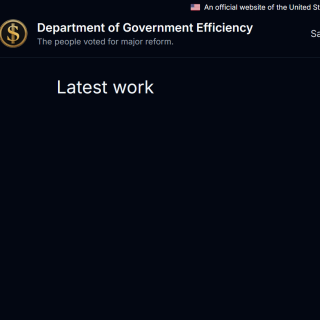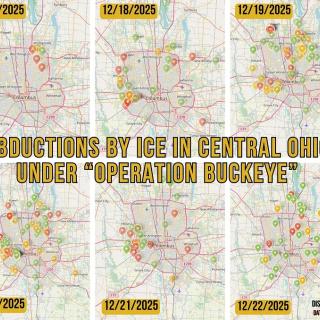Advertisement
Built by native peoples roughly 2,000 years ago, the Ohio Earthworks – such as Serpent Mound and the Newark Octagon – are on the threshold ofachieving global recognition by the United Nations.
An Ohio Earthworks application for World Heritage Site inscription as designated by UNESCO, the United Nations Educational, Scientific and Cultural Organization, has been in the works by Ohio archaeologists and other experts for over ten years and is set for submission sometime in 2018.
Currently, the Ohio Earthworks are on the “US Tentative List”, but those working on the application told the Free Press they believe it’s just a matter of time before Serpent Mound and the other earthworks become inscribed. There are over 1,000 UNESCO sites across the globe, but Ohio has none.
Inscription would no doubt rectify the past as European settlers and their ancestors demolished many of Ohio’s pre-historic effigies, mounds and burial sites, seeing them as nothing more than piles of dirt.
More recently in 2011, a Scientology-like group called Unite the Collective damaged Serpent Mound by burying into the earthwork a number of “organites” – a piece of quartz and resin molded by a muffin pan. They said they were trying to “reactivate” Serpent Mound so to detect its life energy. Several Native people sources recently told the Free Press too many New Age groups and non-Native peoples have co-opted the sites for their own self-perceived needs and interpretation.
Work to gain UNESCO recognition should secure a better future and strengthen the earthworks’ connection to native peoples.
“These places are considered sacred sites to Native American peoples, and now hopefully through World Heritage inscription they will be considered treasures for the entire world,” says Marti Chaatsmith a Comanche Native Citizen and director of the New Earthworks Center at The Ohio State University at Newark. “The earthworks are engineering marvels. They have stood for 2,000 years and have not fallen down or eroded.”
What’s more, World Heritage Site inscription could bring to Ohio and Columbus an extra 200,000 tourists per year, tens-of-millions in spending and create scores of jobs, according to the Ohio History Connection (once the Ohio Historical Society) of Columbus.
“A couple of decades ago when the Cahokia site outside St. Louis was inscribed the number of visitors increased 15-to-20 times and then leveled out to a 10-fold increase in the number of visitors,” says Professor John Hancock at University of Cincinnati’s The Center for the Electronic Reconstruction of Historical and Archeological Sites, which has played a significant role in the application.
But increased tourism and money is just a secondary goal, says Hancock. It’s about recognizing and protecting what many archaeologists and historians consider masterpieces of native people’s creativity and mathematical genius. Treasures with a significance the Ohio History Connection says equals that of the Acropolis, the Pyramids of Egypt, Stonehenge and other icons of human culture. The Newark Octagon, for instance, was designed to track the motions of the moon, including its major cycle of 18.6-years, and is theorized to be twice as precise as Stonehenge.
The earthworks included in the application are Fort Ancient near Cincinnati, Serpent Mound in southern Ohio, The Earthworks at Newark and the Hopewell Culture National Historic Park in Chillicothe.
World Heritage Site inscription is a complicated and timely process that could span ten to fifteen to even 20 years before success. The Ohio Earthworks application was initiated in 2005 and may not be approved until 2020 or later. And like any application there’s no promise of success and the road could get bumpy.
For instance, several years ago the Ohio earthworks inscription was in limbo when Congress ordered the federal government in 2011 to stop paying its annual dues to UNESCO. The US then lost its UNESCO voting rights as a result of not paying its dues for two consecutive years.
The issue’s roots date back to the 1990s when Congress passed legislation denying payment to any agency of the UN if it accepted Palestine as a member. When UNESCO admitted Palestine in 2011 it triggered an automatic shutoff of payments, which has cost UNESCO more than $300 million in US taxpayer funding.
But Jennifer Aultman, the Ohio History Connection’s World Heritage Site project coordinator, says UNESCO hasn’t blocked any recent US applications and the initial worry has subsided.
“That was a real question mark when it happened,” says Aultman. “What we have seen since that time is that UNESCO has continued to inscribe World Heritage Sites from the US, San Antonio Missions in 2015 and Poverty Point Louisiana in late 2014. All we can go on is what they’ve been doing, and they’re continuing to inscribe US sites.”
Aultman says after the application is submitted next summer, UNESCO sanctioned reviewers will come visit the sites.
Guy Jones of Dayton is full-blooded Native American of the Hunkpapa Lakota tribe from the Standing Rock reservation in South Dakota, which over the previous year became a flash point of protest over the Dakota Access Pipeline. He’s attended several World Heritage Site application meetings, and likes to point out that when he came to Ohio in 1981 there were 27,000 sacred burial sites and mounds. Today there are only 7,600 and his life mission is to preserve and protect what earthworks are left Ohio.
He believes World Heritage Site inscription will offer a greater influence on protecting all Ohio Earthworks and also accept the truth – the earthworks were built by native peoples, for native peoples.
“It will open up the doorway for native peoples to actually participate and be involved not only in the decision making but as to what and how these sites are being preserved and their history,” he says. “UNESCO really encourages native involvement. They really would involve native people.”



